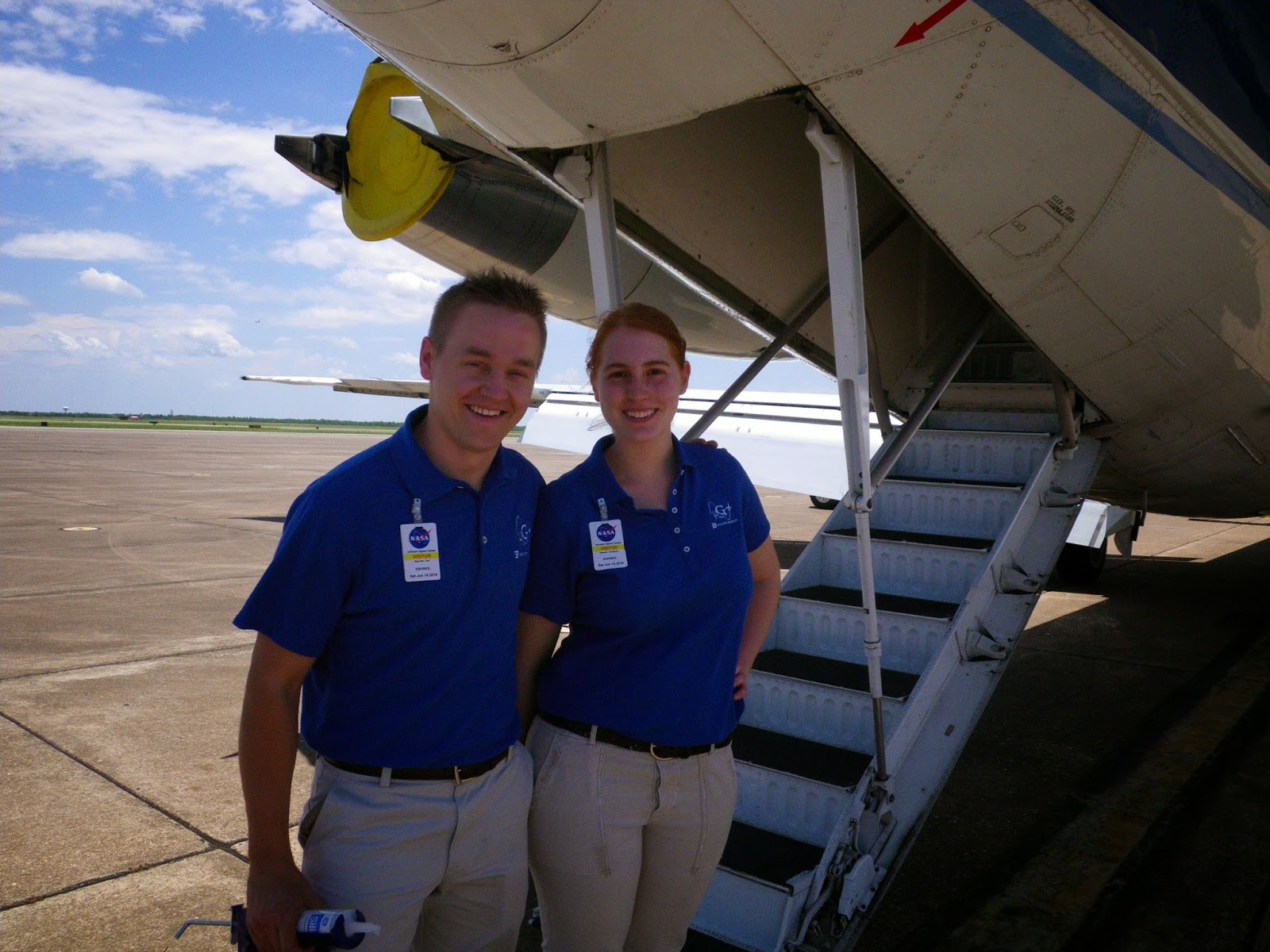My team mates have been writing their reflection posts about their flying experiences, but since I chose not to fly, I am going to write my reflection about my trip to Houston as a whole. This has truly been an unforgettable week! The first three days could be described as hard work with no sleep and high stress. Overcoming the challenges and struggles faced at the beginning of the week made the success at the end of the week even sweeter. I am so grateful to the RGO staff, our NASA mentor Tom, and anyone and everyone involved to make flight week happen. The people at Ellington Field, JSC, and NASA in general really did make the Boise State University Microgravity Research Team's dreams come true. I can't thank you enough!



I went to Houston hoping our experiment would work and thinking that I might learn a few things about NASA. Well let me tell you folks, I am returning home with much, much more. I have gained four great new friends and I have a deeper respect and gratitude for my advisors. I just want to take a minute to thank my team members for making this trip such a great experience for me:
Roxanne,
You are the best team lead ever! Thank you for always giving 110% and never giving up. You handled the stresses of this experience very well and I am so proud of how you have grown as a leader. It was great to have another girl on the trip and I loved laughing with you about silly things the boys did. Congratulations Roxanne! We did it :)
Janos,
Thank you for not giving up or quitting on the team! You stuck with us and were a crucial member in so many ways. You are so patient and kind when I asked you questions and I really appreciate it. You sacrificed and went out of your comfort zone on this trip and I am really proud of you. I am sorry I missed pronounced your name before! I think I got it now ;)
Scott,
So much of your time and energy went in to designing and building this apparatus, I hope you are as proud of it as I am. Your skills were vital to the success of this project. You are very reliable, and we could always count on you being there for the team. It was great getting to know you this week and I just want to thank you for all your hard work and dedication.
Carl,
Thank you for making me laugh! I don't think I have ever laughed so much, in a seven day span, in my entire life. You bring such a positive energy to the team. It was an important factor in our ability to overcome all our setbacks. You may not be the fastest door maker, but you are the best! Thank you for being you and making this experience so memorable.
Jill,
Thank you doesn't even come close to describing how thankful and grateful I am that you are a member of this team. Nor does it begin to express my gratitude and appreciation for all your hard work spent on our project. You are the glue that kept us together. You were our supportive mentor and coach. I hope you gained as much out of this experience as I did!
Dr. Barney Smith,
Thank you for believing in us and giving us the opportunity to come to Houston to have this experience. Thank you for being patient with us and for being understanding. Thank you for never leaving our side or turning your back on us. I appreciate you and all you have done for the team. We could never have done this without you!
I correctly predicted that I would learned some NASA facts and trivia, but more importantly I learned and witnessed NASA's mission in action. Even if our experiment doesn't produce the data we expected it is still useful. The life lessons this experiment has taught me are more valuable than any pressure sensor reading. I would never trade this experience for anything.









































































